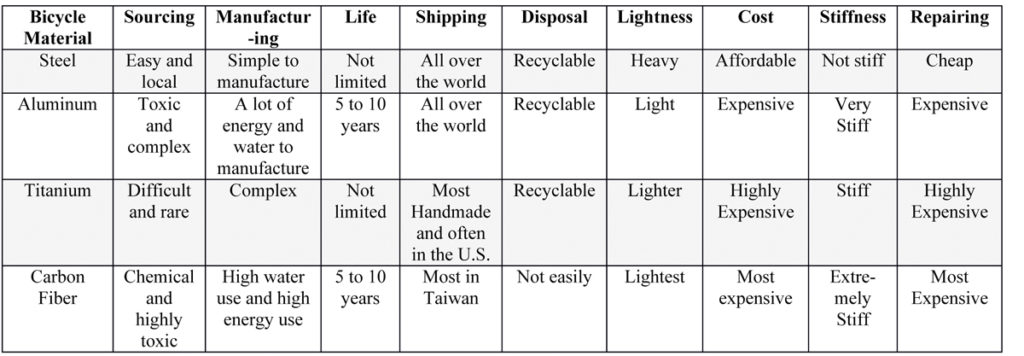So many cyclists around the world are in environmentalists, especially here in Salt Lake City. Yes, riding a bicycle is better than driving a car, but there is much more to bicycling than just riding them. As an environmental studies scholar and long-time cyclist, I figured I would write a column that interweaves those two areas together. The bicycle industry is global and as a result, because of the manufacturing, shipping, and selling of bicycles and bicycles parts the industry causes a considerable ecological impact, economic exploitation, all while advocating for ecological conservation. In this article, we will look at: (1) unity in the bicycle industry, (2) living wage, and (3) ecological impact.
Unity – The bicycle industry could learn a thing or two from the outdoor industry, which recently boycotted the state of Utah for their Outdoor Industry Association’s annual convention, which brought over ten million dollars a year to Utah. The reason is because the state of Utah plans to allow energy companies to mine uranium and extract oil and gas in the Bear Ears National Monument, a million acres in southwestern Utah. Bear Ears National Monument was created and protected by President Obama, but in 2018 Utah Governor Gary Herbert signed a resolution to President Trump to overturn the designation. This unification by many outdoor companies is something that is in desperate need in the bicycle industry, such as the bicycle industry needing to protest the tariffs, which President Trump signed into place that will increase the price of many bicycles, which will as a result put some bicycle manufacturers out of business and cause some bicycle stores to go bankrupt. Moreover, the unification of bicycle companies encouraging customers to buy bicycles and bicycle parts at a bicycle shop is essential for the bicycle industry and community to survive. For years, bicycle shops were pseudo youth community centers. Bicycle shops today are not merely stores, but community centers to meet fellow cyclists and talk to employees about the latest gear. The bicycle industry also needs unification on supporting bicycle manufacturers and parts makers that do not have a universal manufacturers suggested retail price (MSRP) to implement one in order to support the bicycle shops.
Living Wage – When shopping for a bicycle, I am sure the sales-person never speaks about the living wage of the employee at the bicycle manufacturing plant in Taiwan. Are the employees building, selling, and designing the bicycles making a living wage? This is an important question to ask. If a buyer of a bicycle is concerned about this, the best purchasing decision is buy a bicycle in a country with strict minimum wage laws such as the United States, Canada, England, and Italy. Further, ask the bike shops if they are paying for insurance, dental, and providing a living wage to their shop employees. Of course, this is difficult, but bike shops should strive to do this and many are.

Environmental Conservation – Now let us move onto the last topic of this article environmental conservation. There are five factors in determining if a bicycle is ecologically sustainable or not – (1) the sourcing of the material to build the bicycle, (2) the manufacturing of the bicycle, (3) the life of the bicycle, (4) the shipping of the bicycle, and (5) disposal of the bicycle. Most bicycles are made of four materials (1) steel, (2) aluminum, (3) titanium, and (4) carbon fiber. Of course there are other materials such as bamboo, which Calfee bicycle uses, which might be the most environmental, but for this article we will only look at the main four. From the chart below, carbon, used by most major bicycle companies, is the most expensive and ecological destructive, while aluminum, also used by most companies, is almost as stiff and light as carbon, is not as expensive and is readily recycled. There is titanium, which often is used by handmade companies such as Seven, Moots, No. 22, and Twinsix, which is not stiff, rather it is forgiving and a responsive smooth ride. Because it is used almost exclusively by handmade companies titanium is often more expensive than carbon, but lasts forever. Finally, steel is the cheapest of all materials, not as rigid as aluminum and carbon, and is the most ecologically sustainable – but it can rust, which titanium does not. For more analysis on the four materials, see Table 1.
The most environmentally sustainable way when purchasing a bike is to buy a used bike, ideally steel or titanium, as they will last the longest. Further, some bicycle manufacturers such as Moots (and many bike shops too) run their factory on solar panels, recycle all of their materials including paper, cardboard and metals, and have a community garden. Additionally, Moots and Chris King, for example, give back to the community by financially supporting nonprofit environmental protection organizations.
There is a lot to think about when buying a bicycle, besides how it rides. Do your homework, get online, make some phone calls, and ask many questions – the bicycle industry, employees, and the world is counting on you.

